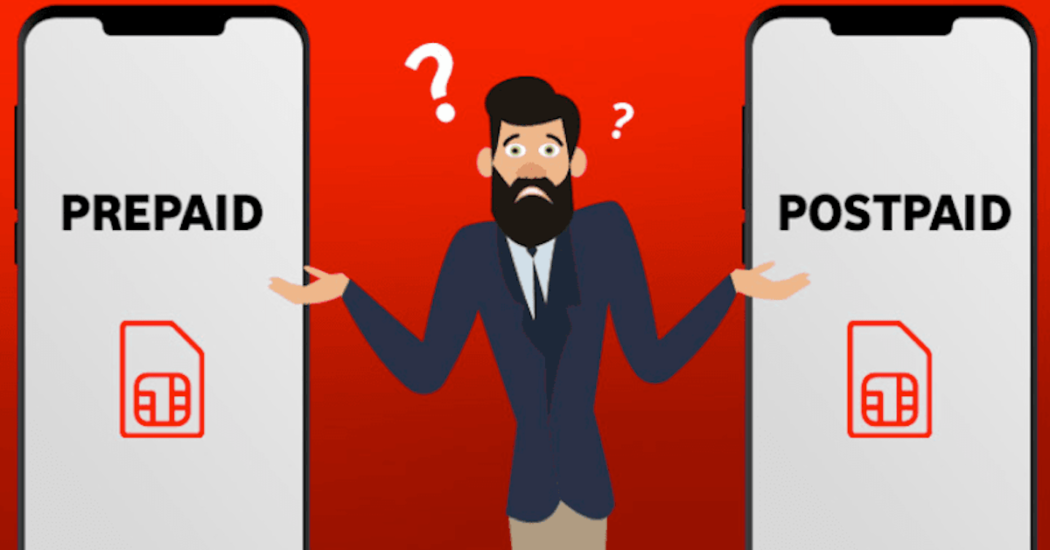In an age where staying connected is paramount, choosing the right mobile plan can be as crucial as selecting the right smartphone. The debate between prepaid and postpaid is an enduring one, with both sides offering their own sets of advantages. With major telecom players like Airtel stepping up their game, the transition from ‘Airtel Prepaid to Postpaid’ has become a hot topic among users.
Let’s delve into the ‘Prepaid and Postpaid difference‘ and see if it’s time for you to make the switch.
1. Uninterrupted Connectivity
Prepaid: You’re always on your toes, ensuring your balance doesn’t run out. A sudden trip or an unexpected long call can easily deplete your prepaid balance, causing inconvenience.
Postpaid: With postpaid, you get the luxury of uninterrupted connectivity. Whether it’s an urgent business call, a chat with a long-lost friend, or binge-watching your favourite series, you don’t have to worry about your balance running out.
2. Budgeting and Predictability
Prepaid: With prepaid plans, you have upfront control over your spending. You decide how much you want to spend and recharge accordingly. This can be ideal for those on a tight budget.
Postpaid: Postpaid plans bring predictability to the table. If you have a fixed monthly mobile usage, you get a consistent bill every month. No surprises, no guesswork – you know exactly what to expect.
3. Comprehensive Plans and Packages
Prepaid: Prepaid users often enjoy a plethora of short-term offers, flash deals, and custom packs. If you’re someone who loves trying out new packs or switching plans frequently, prepaid might seem exciting.
Postpaid: Airtel Postpaid, for example, provides comprehensive packages that usually bundle in more services, like larger data allowances, free subscriptions to entertainment platforms, and family plans. These can offer better overall value for regular users.
4. International Roaming
Prepaid: International roaming on prepaid can be a tricky affair. It often involves purchasing specific packs that cater to the country you’re visiting.
Postpaid: Postpaid users, in contrast, generally have access to seamless international roaming facilities. With Airtel Postpaid, there are often plans which allow you to use your local package in other countries without the need for complex conversions or additional top-ups.
5. Bill Cycle Flexibility
Prepaid: Prepaid requires frequent top-ups, and users have to keep a close eye on validity periods.
Postpaid: With postpaid, there’s a fixed bill cycle. This ensures you have a consistent date by which your mobile expenses are settled. For people with monthly salary cycles or those who manage several bills, this regularity is a blessing.
6. Advanced Features & Customer Service
Prepaid: While prepaid users get access to customer service, there might be some advanced features or immediate services that are reserved for postpaid users.
Postpaid: Being on a postpaid plan, especially with renowned providers like Airtel, often equates to enjoying priority customer service and access to premium features. Whether it’s faster resolutions, early access to new features, or exclusive offers, postpaid users frequently get the cream of the crop.
The decision to switch from prepaid to postpaid is personal and largely depends on one’s mobile usage habits, budget, and preferences. While prepaid gives users the flexibility to control and alter their spending, postpaid offers a realm of convenience, predictability, and premium features.
For instance, if you are someone who travels frequently, needs a consistent bill cycle, and wishes to leverage the best services and features, making the transition from Airtel Prepaid to Postpaid might be a favourable choice. On the other hand, if you enjoy the freedom to change plans or need strict control over mobile expenses, you might decide to stick with your prepaid plan.
Either way, the key is to stay informed, assess your needs, and choose the plan that aligns best with your lifestyle. Remember, whether you’re on prepaid or postpaid, staying connected is what truly matters.





